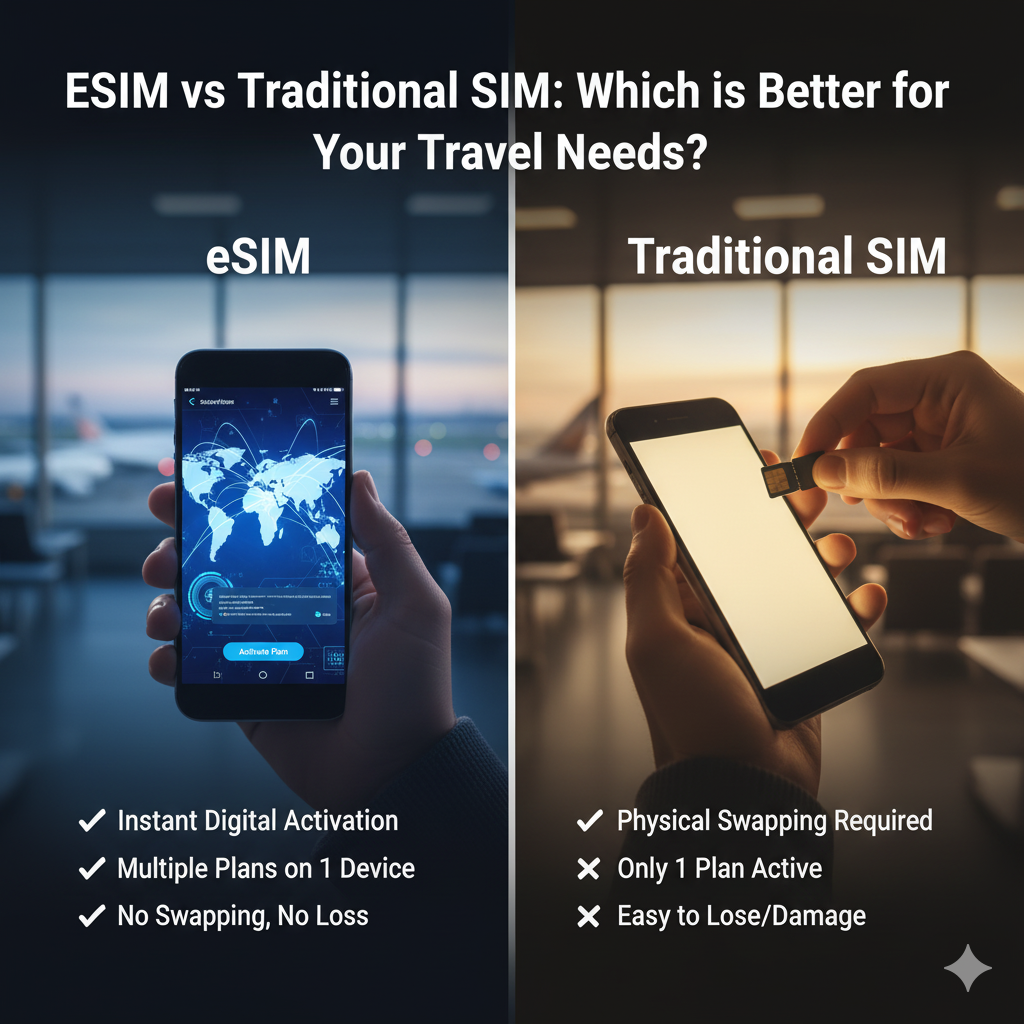
eSIM vs Traditional SIM: Which is Better for Your Travel Needs?
Traditional SIM Cards have been the standard for decades. They are physical chips inserted into your phone, linking you to a specific carrier's network.
-
Pros: Widely available, easy to understand for most users, and you can often find very cheap local SIMs in many countries.
-
Cons: Requires physical swapping, risk of losing the tiny card, phone must be unlocked to use a different carrier's SIM, and you can only have one active at a time (unless your phone has dual physical SIM slots).
eSIMs (embedded Subscriber Identity Modules) are built directly into your device, allowing you to download and activate cellular plans digitally.
-
Pros: No physical swapping needed, activate plans instantly from anywhere, store multiple profiles on one device, often more convenient for short trips or multiple destinations, and generally more secure as they can't be lost or stolen.
-
Cons: Not all phones or devices are eSIM compatible, and some local carriers might not offer eSIM options yet.
For most modern travelers, the eSIM offers a significant advantage in convenience and flexibility. Imagine you're on a multi-country tour. With a traditional SIM, you'd be constantly searching for local SIM card vendors, dealing with activation processes, and potentially losing your home SIM. With an eSIM, you could simply switch to a pre-purchased regional plan with a few taps on your phone.
However, if you're traveling to a region where eSIM support is still limited, or if you prefer the simplicity and often lower cost of purchasing a local physical SIM for a longer stay in one country, a traditional SIM might still be the way to go.
